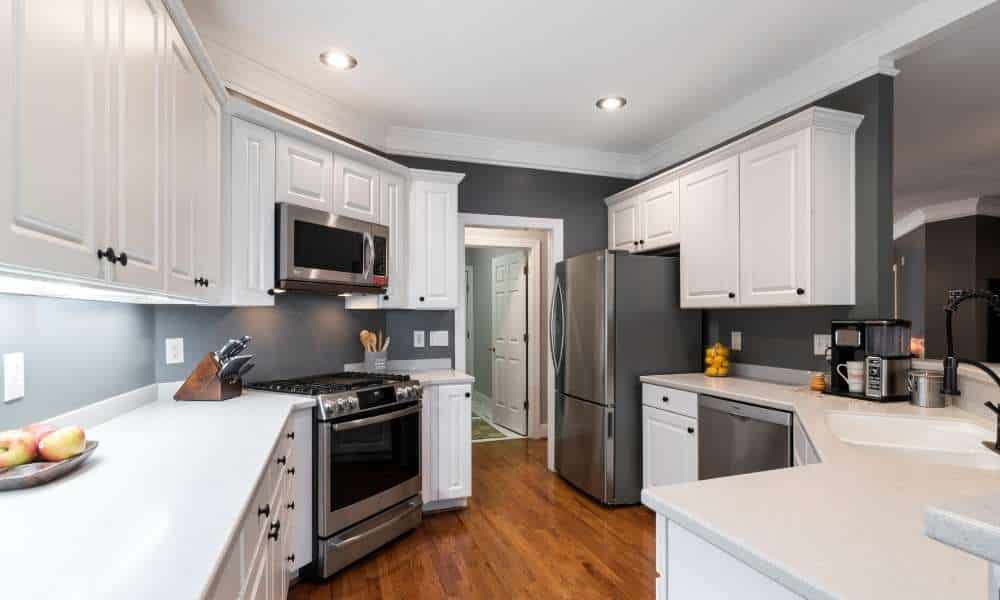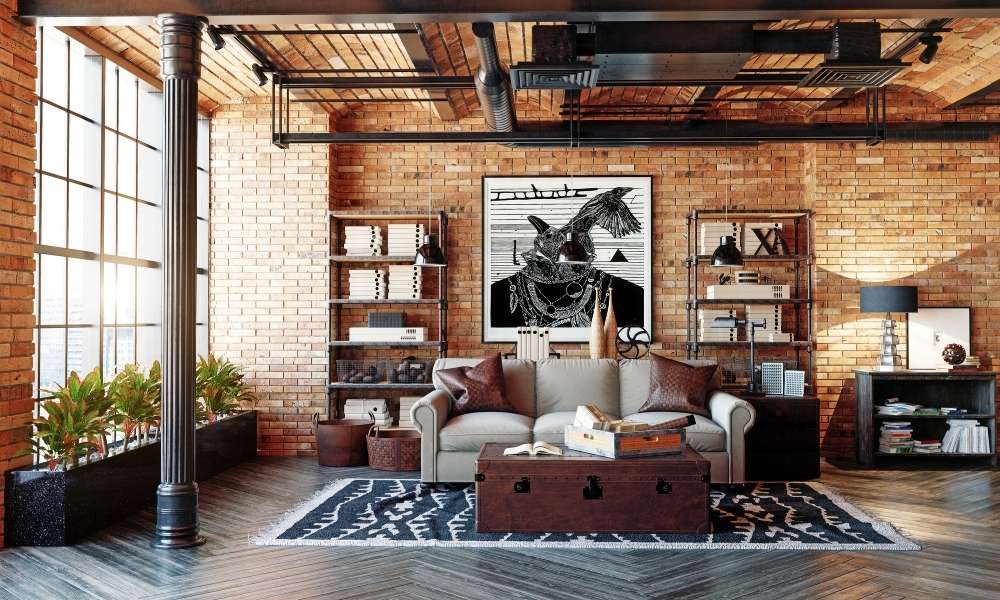It’s been called the next tech revolution, and in many ways. It really could be one of the most game-changing technologies since the internet itself. What am I talking about? Smart homes! By making your home just that — smart — you can save money on utility bills. Create a more comfortable living environment and even be more productive throughout the day. Want to know how to make a smart home? Keep reading to find out! Home is where the heart is, but it’s also where you spend most of your time; so why not make it healthy, happy and smart? There are quite a few ways to go about making your home smart. But below are some excellent ways to start.
What Is A Smart Home?
A smart home is one that makes it easier for you to control and automate your home’s functions with minimal human effort. A healthy home is always considered good news. So consider taking on small projects like adding ventilation or new light bulbs.
Healthy living has never been easier than when you have a smart home at your disposal! How to create an efficient and easy-to-use experience? This guide will help you make a plan from beginning to end.
Benefits Of Having A Smart Home
Our homes are often filled with electronics, so creating one that’s at least semi-smart can be helpful in many ways. From peace of mind to energy efficiency, here are some reasons why you should make your home smart. But before we dive into these benefits it’s important to note that making your home smart is actually two different things: making it automated and making it connected.
These two goals might sound similar but they mean totally different things—and both provide different benefits. While there are obviously more than just five benefits. We think these ones really stand out as being super useful for anyone who wants their home on point. Before diving in, though, let’s explain what makes up an automated home versus a connected home.
In an automated home, you have simple options like light bulbs that change color based on events or weather reports. Or blinds that shut when fire alarms detect smoke. Some even include remote control window coverings and thermostats to help keep rooms at specific temperatures regardless of whether people are home or not.
The Future Of Smart Home
Looking for a guide? We’ve outlined how smart home technology works and laid out a number of steps that will allow you to create your own smart home in no time. If you want to know what devices make up a smart home. Take a look at our Home Guide and get familiar with both basic and advanced concepts.
Home security, alarm systems, smoke detectors, flood sensors—we can help you figure out which devices are best for your needs. The internet of things is growing more advanced every day and as it does it will make our homes safer more efficient and overall better places to live. By learning how to make our homes smarter we also learn about ourselves. Let’s explore! What would you do if you knew exactly when your hot water heater went on the fritz or if it was suddenly leaking gas into your home?
Home safety becomes easier when you have an idea of all its possible issues ahead of time. It may be a good idea to check into some advanced home monitoring services; they may not have been created yet but someone’s working on them right now! Just ask: Home Monitoring Services Startups And More . Just because most people don’t go around thinking about their homes doesn’t mean they aren’t fully aware that there are real opportunities for innovation here. That’s why engineers and programmers everywhere continue seeking solutions to build better homes for us all.
What Things Can I Control With My Voice Assistant?
You might be surprised how many tasks you can do with just your voice. Need to set an alarm, get directions or even turn on your lights? All you need is one of these popular smart home assistants: Amazon Echo (Alexa), Google Home (Google Assistant) and Apple Home Pod (Siri). Not sure where to start?
Check out our handy Voice Assistants for Dummies guide for some advice. If you already have a digital helper in your home, there are plenty of commands that allow you to control things around it. For example, Alexa allows users to turn off/on any smart device in their home by saying Alexa, [turn] off my living room lamp – there are more than 10 other options like setting timers, asking what’s on your calendar and more.
To help you quickly find out what each assistant can do for all areas of your life such as TV & entertainment and home & garden from laundry to security check out best buy’s latest eBook called Your Smart Home Guide. It’s got tons of cool tips about what’s possible when connected devices are working together through established ecosystems like Wink, WeMo or Nest.
What Is A Healthy Home?
A healthy home is one where residents are breathing clean air and have few, if any, health issues that can be linked back to environmental conditions within their home. However, most people don’t think about keeping their homes clean and safe until it’s too late: when they start experiencing respiratory issues or other negative effects from poor indoor air quality.
You don’t want to find yourself in that situation: make your home a safe environment for you and your family by making these healthy choices. It just takes a little knowledge and some effort. So what exactly makes up a healthy home? Read on to learn all of the essential components of a home that promotes wellness.
1. Be smart with heating and cooling: Most homes rely on heating/cooling systems throughout each season, but poor insulation often results in uneven temperatures, especially during summer months; hot spots may mean elevated levels of radon gas—the leading cause of lung cancer among non-smokers—and allergens like dust mites and mold spores. To create a more balanced temperature distribution (and minimize excess energy usage), try installing an energy-efficient central AC system; dual-paned windows; insulation; ceiling fans; draft seals around doors and windows; programmable thermostats; R-rated weatherstripping (for attics); UV lights that kill airborne germs, etc.
How To Create A Healthy Environment In Your Home?
If you’re remodeling your home or starting from scratch, be sure to plan ahead. You’ll save money on energy costs and prevent illness by adding smart systems that balance air quality, energy efficiency and sunlight. Let’s get started with one of these easy projects! For an organized, healthy home that feels great throughout, focus on three main areas: controlling temperature, avoiding indoor air pollution and creating clean lighting. We also included some bonus tips at the end for even more ideas!
1) Temperature Control & Insulation – It’s easier than ever to keep your home at a comfortable temperature all year long. From installing climate control systems to using durable storm windows, there are many practical upgrades that can save money in addition to providing health benefits for you and your family.
2) Air Quality – By purchasing eco-friendly cleaning products, installing ventilation fans and reusing materials around your home (such as glass jars), it is possible to improve air quality while minimizing cost—which is especially important if you have children who may have respiratory problems or allergies. 3) Lighting & Ventilation – The human eye can see about 10 million different colors; yet artificial lighting usually consists of only 3 color ranges: red, green and blue. This creates what’s known as blue light, which has been shown to cause insomnia in some people as well as other health concerns such as headaches. Creating natural lighting through windows or skylights in your home can also help with seasonal affective disorder (SAD).4) Putting It All Together!
5 Tips for Creating a Healthy Home Environment1)- Create an Air Well: To effectively create cross-ventilation throughout your home, it’s best to use the house plan of origin you already have and put in bi-fold doors that open into new rooms on either side.
How Can I Make My House A Smart House?
There are various home automation gadgets that can be used in everyday life and help you make your house smarter. The question is, which of these devices should you buy? We’ve put together a guide that discusses some of the smart home devices on sale right now and what they do for you. That way, you can figure out which ones best suit your needs. Let’s get started! 11 Ways To Easily Upgrade Your Home: Thinking about upgrading your home?
This buying guide aims to help people who would like to update their homes but aren’t sure where to start or have limited budgets. These affordable home upgrade ideas range from decorating items that don’t cost much money but have a big impact, replacing appliances with more efficient versions, and taking simple steps such as changing light bulbs to save electricity bills.
Each home improvement project costs less than $200–for most upgrades it’s closer to $100-$150. Best Home Theater Projector Under $1000 : If you want an easy and flexible home theater experience then a projector might be just what you need – it’s also an excellent solution if you’re living in a small apartment without room for bulky speakers. Projectors also give off a great picture quality due to improvements made on LCD technology; we have picked 5 of our favorites below ranging from under $1000 all the way up to under $3000.
Final Thought
This home guide will help you make smart decisions about building your home. When you have finished reading it, you will be more knowledgeable about smarter homes, and ready to make smart choices that work for you. You’ll also have resources for further learning if you want them. Best of luck with building your smarter home! Rent or buy?
Will my home control system play nicely with others? Will I need new home appliances? Is energy management right for me? How can I save money on my monthly utility bills? What happens when my technology becomes obsolete or breaks down and I don’t have any money saved up to fix or replace it? The most popular option today is smart thermostats, which learn from users’ habits in order to manage temperatures more efficiently. In addition to making homes more comfortable and efficient, these technologies are helping us use less energy in our daily lives.
But just as there is no one-size-fits-all house design, there’s no one home automation solution either: Control systems such as Amazon Echo and Apple HomeKit are extremely compatible with other smart devices — but they aren’t compatible with all of them (such as non-Amazon/Apple products). While expensive technologies like home security cameras and video doorbells might offer convenience now, they’re likely to become outdated quickly. Energy monitors present a similar problem: If too much time passes between bill payments, their data could be useless by the time you receive it. Looking at long-term financial implications may seem tedious compared to cool features like remote controls for lights or speakers — but things change fast in techland.





